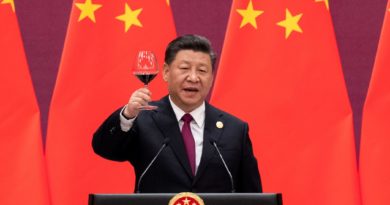MANILA: ECONOMY – ‘Build Build Build’ to increase NG debt

National government debt—which ballooned to P6.65 trillion last year—will see a short-term increase as the Duterte administration implements an ambitious infrastructure program, the Finance department said on Wednesday.
“In the short-term, the government’s ‘Build Build Build’ program may exert upward pressure on the debt stock,” Finance Undersecretary Gil Beltran said in an economic bulletin.
In a separate statement, Finance Secretary Carlos Dominguez 3rd said the program would be shifting into high gear this year with the rollout of a first set of big-ticket infrastructure projects and the implementation of the Tax Reform for Acceleration and Inclusion (Train) law.
Funding support from higher taxes under Train will be complemented by concessional financing packages from development partners, which Dominguez claimed would be well managed to ensure fiscal stability.
.
ADVERTISEMENT: This space is reserve for your Ad, contact aseanews.net now!
.
“I am sure the projects that have been planned for the DPWH (Department of Public Works and Highways) are going to go into high gear now that we have basically our capital already, our own funding for our portion of these projects,” Dominguez said, referring to expected Train revenues.
“And I guess this will also encourage the multilateral agencies and the other funding agencies to increase their lending to us,” he added.
“Let me just point out that our debt as a percentage of our GDP (gross domestic product) has been on a steady decline. When we took over, it was something like 43 percent… And we can see that declining over the years,” the Finance chief said.
According to Dominguez, about a fourth of the capital needed for the government’s P8.44-trillion infrastructure modernization program will come from Train revenues while the rest will be funded by official development assistance (ODA).
In the economic bulletin, Beltran noted that the NG debt to GDP ratio was maintained at 42.1 percent last year while nominal GDP rose by 9.1 percent.
“From a high of nearly 75 percent in 2004, debt-GDP ratio was drastically reduced to below 45 percent, owing to prudent debt management, fiscal discipline, and economic growth,” he said.
“The economy has been outgrowing debt in the past years, meaning the country’s capacity to service its debt has been improving,” Beltran continued.
The Finance department did not offer estimates as to how high NG debt would increase under the “Build Build Build” program.
Earlier this week, the Bureau of the Treasury reported that NG debt had expanded by nearly P600 billion last year, to P6.65 trillion, due to factors such as pre-funding for this year’s spending requirements.
It was equivalent to 42.1 percent of GDP, which the Treasury stressed was unchanged from 2016. The result, however, was higher than the 40.7 percent target presented during a Development Budget Coordination Council (DBCC) meeting last June.
“The difference compared to the program is due to the lower than DBCC target nominal GDP and the successful issuance of RTB (retail treasury bond) in December to pre-fund some of the 2018 financing requirement,” the BTr said in a statement.
Domestic borrowings accounted for the bulk or P4.44 trillion of full-year NG debt, up by 12.9 percent from last
year.
At P2.21 trillion, meanwhile, total external debt increased by 2.6 percent.
The Finance department has said that majority of the 75 flagship projects under the “Build Build Build” program, worth a combined P1.8 trillion, are already in the construction or pre-construction phases.
These include the P23-billion Metro Manila Flood Management Project, which is co-funded by the Asian Infrastructure Investment Bank and the World Bank; the P151-billion Philippine National Railways South Long Haul Line and the P355.6-billion Mega Manila Subway, which will respectively be funded by ODA from China and Japan.
COURTESY:
BUSINESS TIMES
BY MAYVELIN U. CARABALLO, TMT
ON
.
NOTE : All photographs, news, editorials, opinions, information, data, others have been taken from the Internet ..aseanews.net | [email protected] |
For comments, Email to :
Pahulu Gan – Contributor | [email protected]









